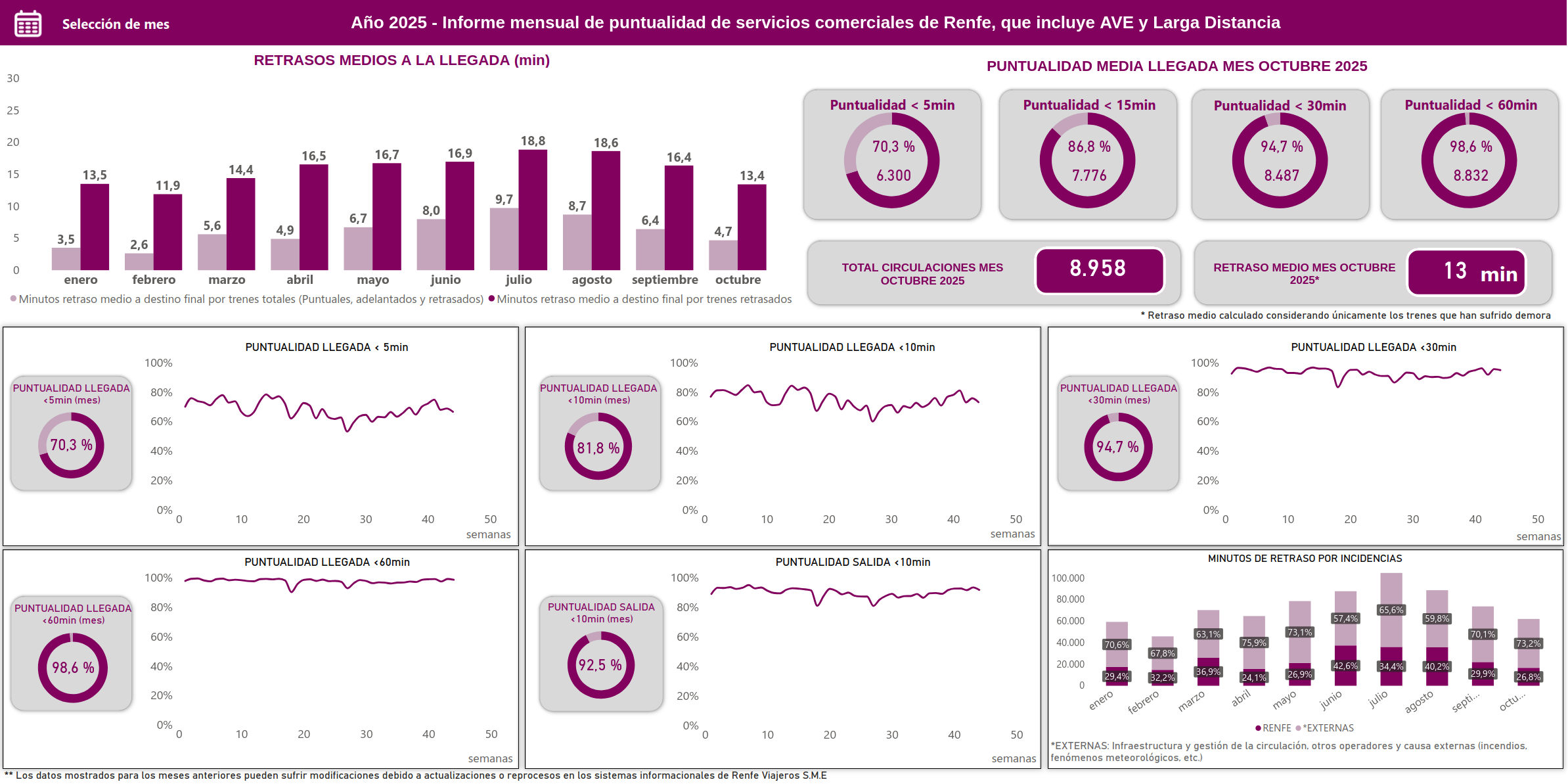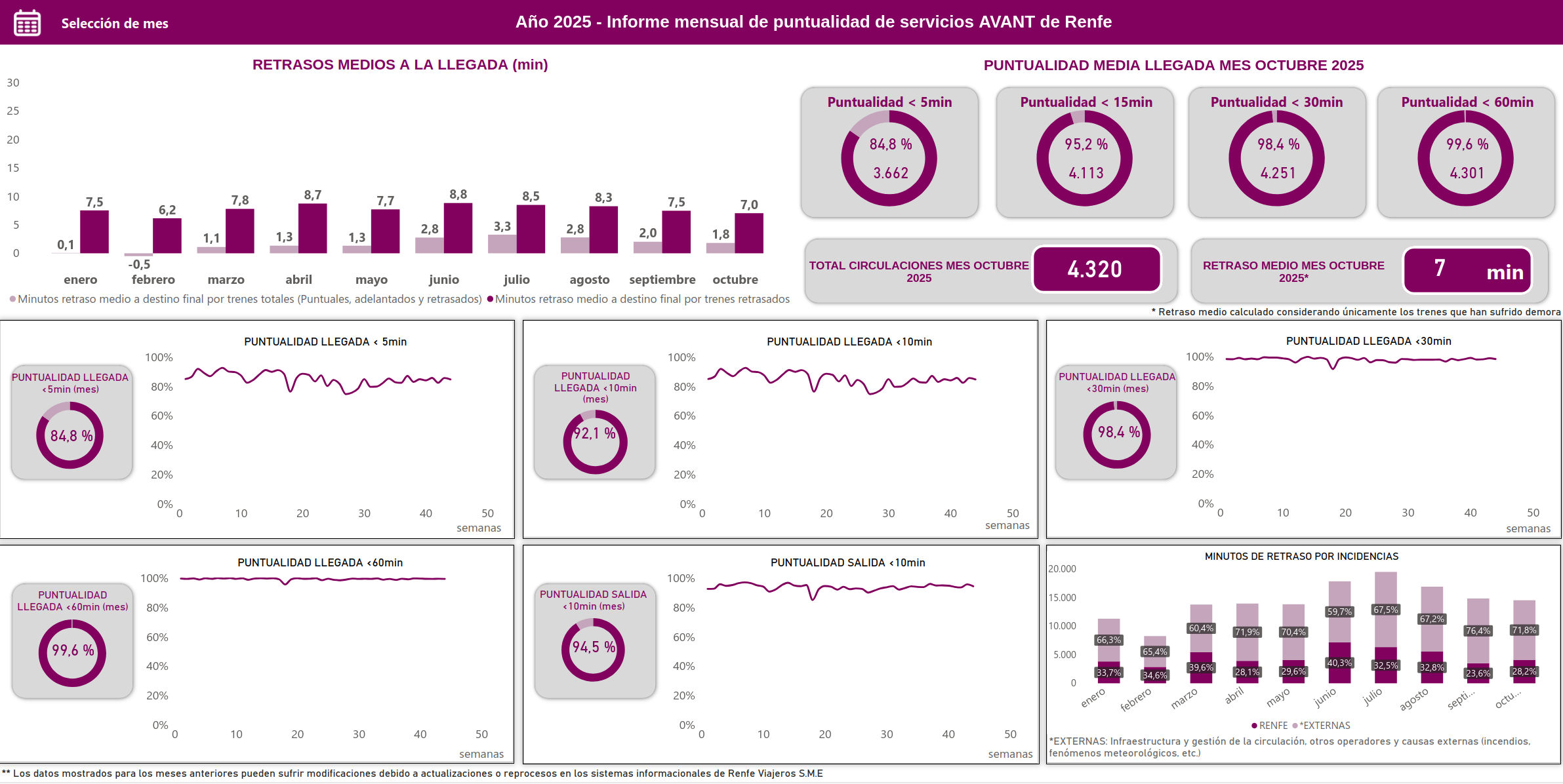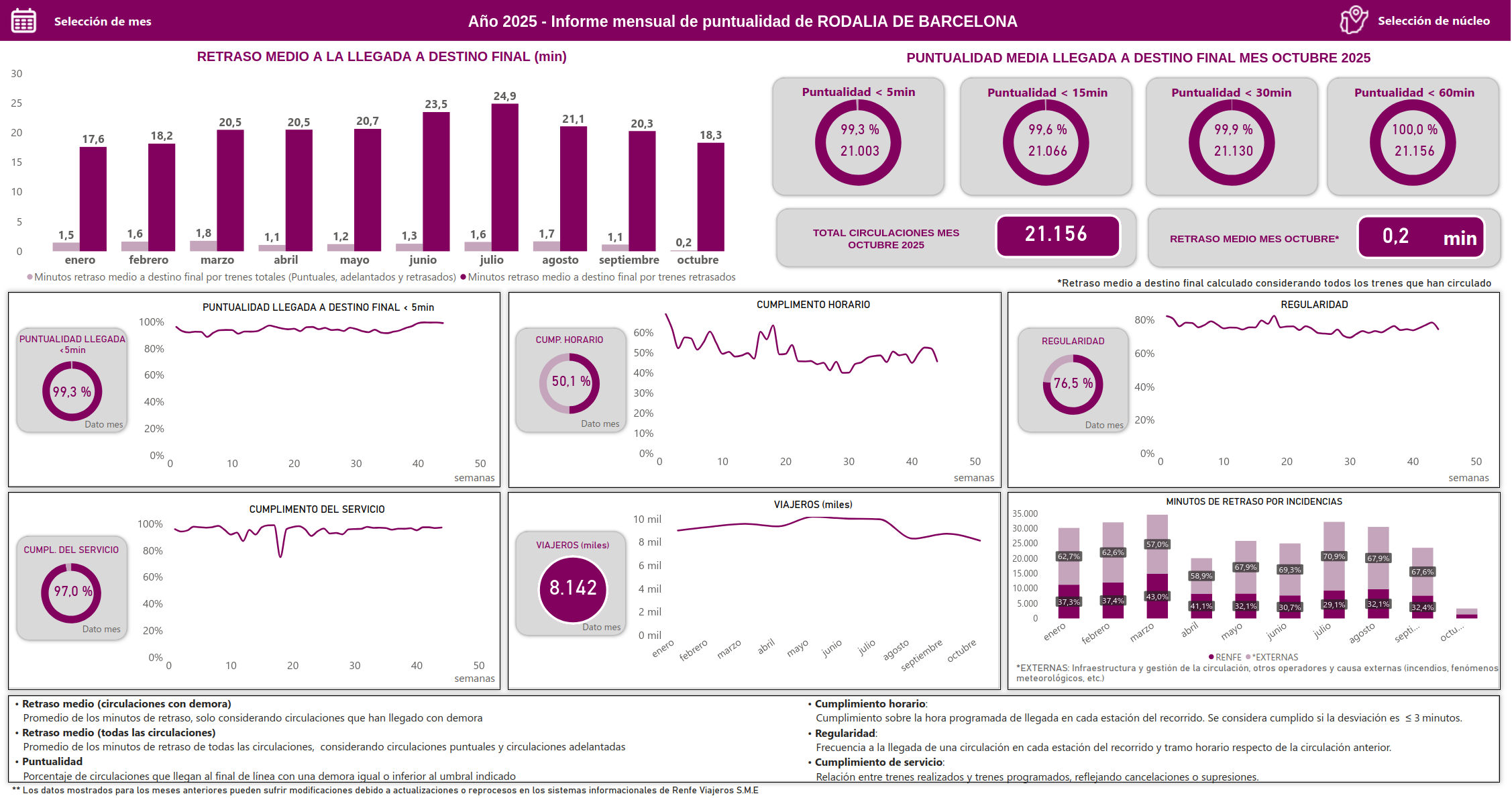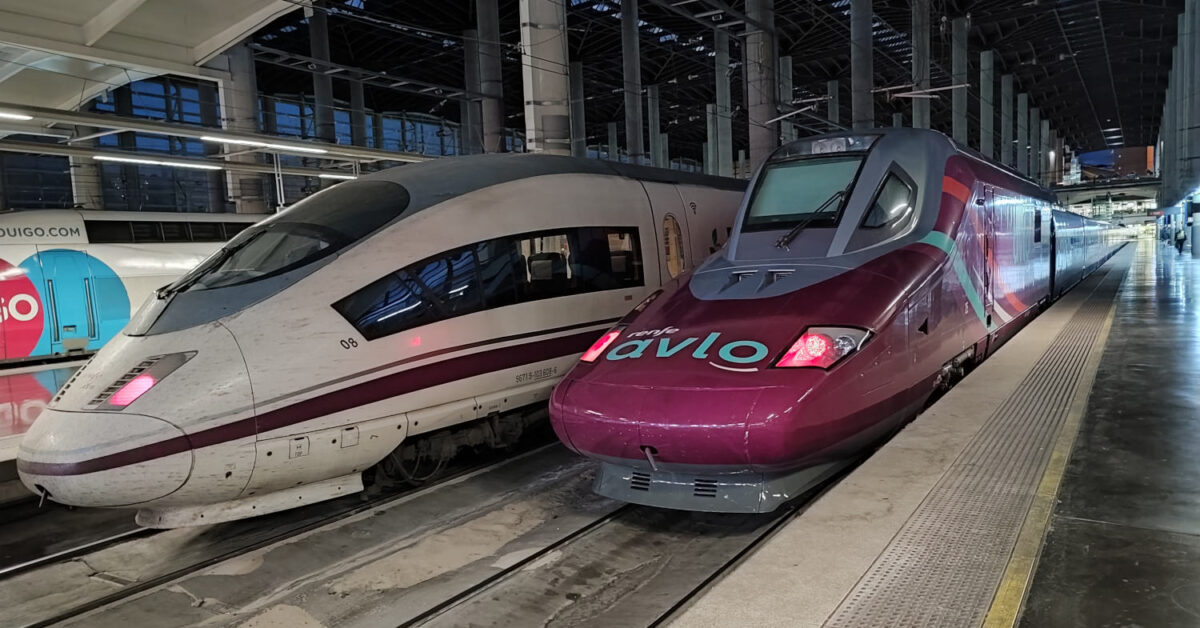Renfe has published punctuality data for October as part of its new transparency policy.
Since last month, it has been possible to view punctuality data for all services, broken down by commercial, Avant, Media Distancia and Cercanías/Rodalies hubs.
This has improved slightly for all high-speed services.
Con Trenvista Premium, disfruta de una experiencia sin anuncios y acceso a contenido exclusivo.
Únete por sólo 35€ al año y aprovecha ventajas exclusivas diseñadas para personas expertas en el ferrocarril.
★ Descubre Trenvista Premium
Open-access services

In open-access trains (Alta Velocidad and Larga Distancia), out of a total of 8,958 runs, 70.3% of trains arrived at their destination with less than 5 minutes delay (compared to 67.8% in September) and 87% with less than 15 minutes, 3% more than the previous month.
73% of the delays recorded were due to external causes, such as rail traffic management or infrastructure incidents.
Avant

In Avant services, with 4,320 trains, 95.2% were less than 15 minutes late, compared to 94.9% in September, and 84.8% were less than 5 minutes late (an improvement of 0.4%). In these trains, 72% of the delays were caused by causes beyond Renfe’s control.
Media Distancia

In Media Distancia, out of 10,296 circulations, 87% arrived with less than 15 minutes delay (a drop of 0.9%) and 84.5% of the delay minutes were due to external factors.
Suburban trains
For commuter services we are going to analyse the Madrid and Rodalies Barcelona hubs.

In the capital, 96% (+0.4% compared to September) of trains arrived with a delay of less than 5 minutes and 99.1% (-0.1%) with a delay of less than 15 minutes.

In Barcelona, Renfe reports a 99.3% punctuality rate (compared to 94.4%) for trains arriving less than 5 minutes late and 99.6% (+1.9%) for trains arriving less than 15 minutes late.
In addition, Renfe has incorporated a new indicator into its monthly reports that makes it possible to identify the origin of delays in minutes, distinguishing whether they are attributable to the company or to external factors, such as breakdowns, incidents involving other operators or adverse weather conditions.
